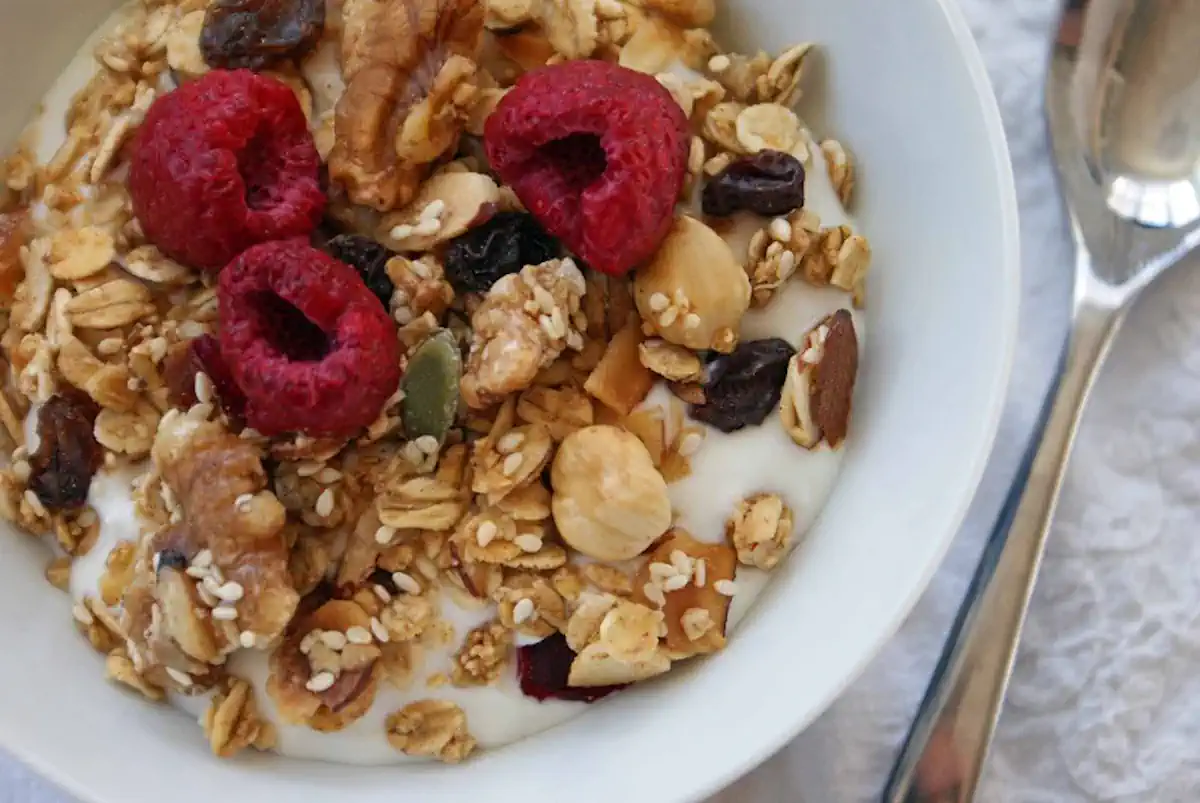In the bustling aisles of modern supermarkets, a quiet revolution is taking place. Nestled among the brightly colored boxes of sugary cereals, a new contender has emerged: ancient grains. These nutritional powerhouses are making a comeback in healthy cereals, offering a delicious alternative to conventional breakfast options. The New York Times crossword puzzle even featured “ancient grain in a healthy cereal” as a clue, highlighting the growing popularity of these wholesome ingredients.
But what exactly are ancient grains, and why are they suddenly appearing in our breakfast bowls? These are the grains that have remained largely unchanged for thousands of years, cultivated using traditional methods and free from modern genetic modification. From quinoa to amaranth, spelt to millet, these grains have been staples in various cultures for millennia, prized for their nutritional value and resilience.
As consumers become more health-conscious and seek out foods with minimal processing, ancient grains have found their way into a variety of products, with healthy cereals leading the charge. These grains not only pack a nutritional punch but also offer unique flavors and textures that elevate the humble bowl of cereal to gourmet status.
In this article, we’ll dive deep into the world of ancient grains, exploring their history, nutritional benefits, and how they’re transforming the landscape of healthy cereals. Whether you’re a health enthusiast, a culinary adventurer, or simply curious about the latest food trends, join us on this journey to discover why ancient grains are becoming the stars of the breakfast table.
The Rise of Ancient Grains in Modern Diets
Ancient grains have been experiencing a renaissance in recent years, with health-conscious consumers and food manufacturers alike embracing these nutritional powerhouses. But what’s driving this trend?
Health Benefits
Ancient grains are often touted for their impressive nutritional profiles. Many are rich in fiber, protein, vitamins, and minerals, making them an excellent choice for those looking to improve their diet For example, quinoa is a complete protein, containing all nine essential amino acids, while amaranth is high in iron and calcium.
Gluten-Free Options
With the increasing awareness of gluten sensitivities and celiac disease, many people are seeking gluten-free alternatives. Several ancient grains, such as quinoa, amaranth, and millet, are naturally gluten-free, making them popular choices for those avoiding wheat.
Sustainability
Ancient grains are often more resilient and require fewer resources to grow compared to modern wheat varieties. This makes them an attractive option for environmentally conscious consumers and farmers alike.
Culinary Diversity
The unique flavors and textures of ancient grains add variety to our diets. From the nutty taste of quinoa to the slightly sweet flavor of amaranth, these grains offer new culinary experiences for adventurous eaters.
Popular Ancient Grains in Healthy Cereals
Let’s take a closer look at some of the ancient grains you might find in your healthy cereal:
1. Quinoa
This South American grain is actually a seed, known for its high protein content and fluffy texture when cooked.
2. Amaranth
Tiny and slightly peppery, amaranth is packed with iron and calcium.
3. Spelt
A cousin of wheat, spelt has a nutty flavor and is easier to digest for some people who have trouble with modern wheat.
4. Millet
This small, round grain is gluten-free and has a mild, slightly sweet flavor.
5. Teff
Originating from Ethiopia, teff is tiny but mighty, boasting high levels of iron and calcium.
6. Kamut
Also known as Khorasan wheat, this ancient relative of modern wheat has a rich, buttery flavor.
7. Buckwheat
Despite its name, buckwheat is not related to wheat and is gluten-free. It has a distinctive, earthy flavor.
Nutritional Benefits of Ancient Grains
The inclusion of ancient grains in healthy cereals isn’t just a marketing gimmick – these grains offer real nutritional benefits that can contribute to a balanced diet.
- Fiber: Many ancient grains are excellent sources of dietary fiber, which is essential for digestive health and can help maintain healthy cholesterol levels.
- Protein: Grains like quinoa and amaranth are complete proteins, containing all nine essential amino acids. This makes them particularly valuable for vegetarians and vegans.
- Vitamins and Minerals: Ancient grains are often rich in B vitamins, iron, magnesium, and zinc. For example, teff is an excellent source of iron, while quinoa is high in magnesium.
- Antioxidants: Many ancient grains contain antioxidants, which can help protect cells from damage caused by free radicals.
- Low Glycemic Index: Some ancient grains have a lower glycemic index compared to refined grains, meaning they cause a slower, more gradual rise in blood sugar levels.
How Ancient Grains Are Changing the Cereal Landscape
The incorporation of ancient grains into cereals is revolutionizing the breakfast aisle. Here’s how:
- Healthier Options: Cereals made with ancient grains often have higher nutritional value compared to those made with refined grains. They typically contain more fiber, protein, and essential nutrients.
- Diverse Flavors and Textures: Ancient grains bring unique tastes and textures to cereals, offering consumers a break from traditional wheat-based options.
- Allergen-Friendly Choices: With many ancient grains being gluten-free, cereals made with these ingredients provide more options for those with gluten sensitivities or celiac disease.
- Sustainability Focus: As consumers become more environmentally conscious, cereals made with sustainable ancient grains are gaining popularity.
Incorporating Ancient Grains into Your Diet
While ancient grain cereals are an easy way to introduce these nutritional powerhouses into your diet, there are many other ways to enjoy them:
- Homemade Granola: Create your own granola mix using a variety of ancient grains, nuts, and dried fruits.
- Grain Bowls: Use cooked ancient grains as a base for savory lunch or dinner bowls.
- Baking: Experiment with ancient grain flours in your baking recipes for added nutrition and unique flavors.
- Soups and Stews: Add cooked ancient grains to soups and stews for extra texture and nutrition.
- Salads: Sprinkle cooked and cooled ancient grains over salads for a nutritious boost.
Challenges and Considerations
While ancient grains offer many benefits, there are some challenges to consider:Cost: Ancient grains are often more expensive than conventional grains due to lower production volumes and specialized farming practices
- .Availability: Depending on your location, some ancient grains may be harder to find than others.
- Cooking Time: Some ancient grains require longer cooking times compared to more processed grains.
- Taste Adaptation: The unique flavors of ancient grains may take some getting used to for palates accustomed to more refined grains.
The Future of Ancient Grains in Healthy Cereals
As consumer interest in health and sustainability continues to grow, the future looks bright for ancient grains in the cereal industry. We can expect to see:
- More Variety: An increasing range of ancient grains being incorporated into cereals and other breakfast products.
- Innovative Blends: Cereal manufacturers experimenting with different combinations of ancient grains to create unique flavor profiles and nutritional benefits.
- Improved Accessibility: As demand grows, ancient grains may become more widely available and potentially more affordable.
- Education and Awareness: Increased efforts to educate consumers about the benefits and uses of ancient grains.
- Sustainability Initiatives: More focus on sustainable farming practices for ancient grains to meet growing demand while protecting the environment.
The resurgence of ancient grains in healthy cereals represents more than just a passing food trend. It’s a return to nutritionally dense, minimally processed foods that have sustained cultures for thousands of years. As we continue to seek out healthier, more sustainable food options, ancient grains are likely to play an increasingly important role in our diets.
Whether you’re reaching for a box of quinoa-based cereal or experimenting with amaranth in your homemade granola, incorporating ancient grains into your breakfast routine can be a delicious way to boost your nutrition and explore new flavors.
So the next time you’re solving a crossword puzzle and come across “ancient grain in a healthy cereal,” you’ll not only have the answer but also a wealth of knowledge about these remarkable grains and their place in our modern diets.













